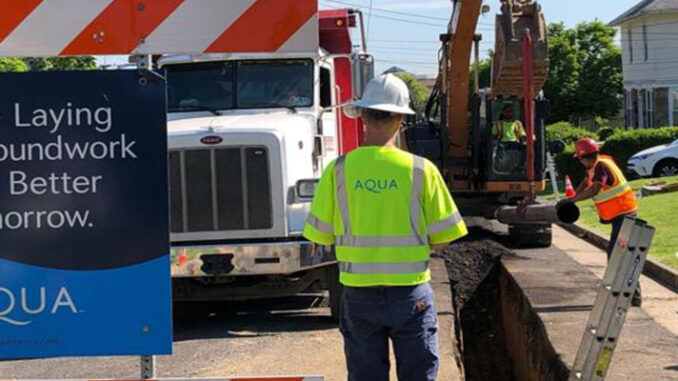
The winter storm that recently devastated Texas, leaving millions without power, water, and heat, is the latest example of why we need a renewed and serious national focus on infrastructure.
For years, people have discussed our crumbling roads and bridges and called for the federal government to prioritize investing in infrastructure, which, as a concept, has strong bipartisan support.
The pandemic sharpened this focus by broadening our definition of infrastructure: Remote schooling has highlighted the need for improved broadband and greater equality of access to digital communications; the strain on our health care system has shown that rethinking how we build hospitals and clinics should be part of the infrastructure conversation; public parks and other outdoor recreational facilities have proven to be very important during the era of social distancing.
While improving and expanding infrastructure is a national problem, we must be creative when searching for solutions. In the past, it was assumed that a single, national, top-down approach, with federal agencies leading the way, was the key to tackling these problems.
But a survey we conducted this fall — through the Kinder Institute for Urban Research at Rice University — of the nation’s 100 largest cities and 100 largest metropolitan areas found that a more “bottom-up” approach, soliciting feedback from localities and states, might be the best path forward. The survey resulted in a list of 1,807 projects that can now be updated continuously and reviewed. This is a first-of- its- kind list of American infrastructure priorities viewed through the eyes of city and regional leaders.
It is important for the Biden administration to lead the way, as the federal government remains the entity with the resources and the might to ensure this investment is made throughout the country. What we found, however, is that plans to improve infrastructure are already on the table in virtually every major population center from coast to coast.
We cannot have more federal spending on “bridges to nowhere.” Limited resources must be used to refuel the nation’s economic engines, just as the New Deal both helped our country emerge from the Depression and created much of the vital infrastructure that served as the backbone of what became the American Century, the greatest economic success story the world has ever known.
As a nation, we cannot stand still in a time of serious international challenges. China is making infrastructure investments not only in its futuristic cities but in other nations with whom it seeks to build trading partnerships. A nation either invests in its future or it slips behind. To maintain that competitiveness, our infrastructure – the underpinnings of our systems of water, power, mobility, education, communications, public works, and health – must help our metropolitan economies stay functional and productive.
Our report identified three broad areas where local and regional priorities should be used to shape the federal infrastructure package:
Infrastructure priorities revealed by the pandemic, including broadband access, emergency response, health facilities, and public transit.
Climate resilience, which also includes public transit as well as renewable energy, clean water facilities, climate mitigation infrastructure such as levies, floodgates, and similar technologies.
Projects that create economic connections between urban and rural communities, such as rural broadband, new energy infrastructure, including renewables and strengthened power transmission to avoid what happened in Texas. In a nation so starkly divided politically between urban and rural areas, creating that connection, and interdependence, is so important for our national future.
It is encouraging that the Biden administration has appointed or nominated state and local leaders for key infrastructure positions, such as former Mayor Pete Buttigieg at the Department of Transportation, Mayor Marty Walsh at the Department of Labor, former Mayor Marcia Fudge at Housing and Urban Development, Gov. Gina Raimondo at the Department of Commerce, former Gov. Jennifer Granholm at the Department of Energy, former Gov. Tom Vilsack at the Department of Agriculture, Connecticut Education Commissioner Miguel Cardona for the Department of Education, and Michael S. Regan, secretary of North Carolina’s Department of Environmental Quality, named to head the Environmental Protection Agency.
At a moment when national unity is so important, and a rapidly changing global economy is set to transform the way we live and work, making the right decisions now about infrastructure will help secure our future for generations to come.
.



